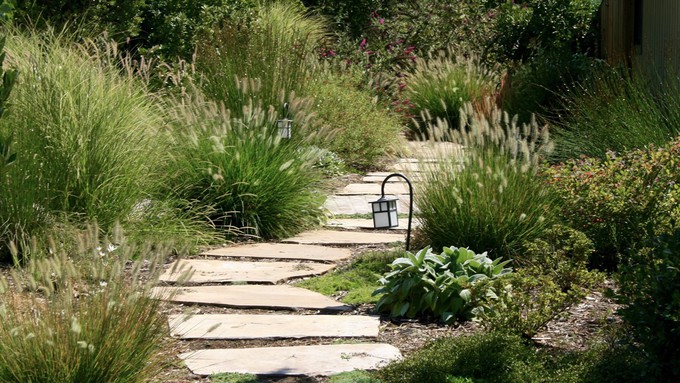
Roseville offers two-month course designed for home gardeners; sign up now

"Green gardens" are beautiful as well as watershed-wise. Learn the right practices in the two-month class offered by the City of Roseville. Courtesy City of Roseville Green Gardener program
Registration is now open for a series of Green Gardener classes, offered by the City of Roseville. The workshops are open to both Roseville residents and non-residents.
Starting Feb. 1, the “Green Gardener at Home” classes will be held at 6 p.m. Thursdays through March 30. The two-hour class meets weekly (except Feb. 22 and 29) at the Utility Exploration Center, 1501 Pleasant Grove Blvd., Roseville.
“Want a stunning, water-saving garden? Interested in preparing your landscape for extreme weather and climate change? Join our Green Gardener at Home series, starting on February 1, 2024,” say the organizers. “Local experts will share eco-friendly tips for healthy plants, soil management, efficient irrigation and pest control.”
The class fee ($55 for Roseville residents, $65 for non-residents, age 18 and older) covers all seven weeks of classroom instruction plus three optional Saturday hands-on demonstration sessions, set for 10 a.m. Feb. 17, March 16 and March 30. Advance registration is required.
The series takes a “watershed-wise” approach, say the organizers. “Enjoy classes with local landscape pros and learn environmentally-friendly, easy-care practices for thriving trees and plants that support an abundance of garden life. For regionally specific garden wisdom and practices, the Green Gardener at Home class is the definitive source.”
Each session will have a specific focus, such as practical irrigation, soil health, edible landscaping, integrated pest management and pruning California native shrubs.
Classes also will cover:
• Essential practices for watershed-wise gardens.
• Growing your rainwater.
• Composting, fertilizing, and mulching for optimum garden health.
• Reducing water runoff and air pollution.
• Selecting and caring for California native plants.
• Luscious lawn substitutes.
To register or learn more about Roseville’s Green Gardener program:
or
https://www.roseville.ca.us/residents/utility_exploration_center and click on the photo captioned “New Year, learn new gardening techniques.”
Comments
0 comments have been posted.Sacramento Digs Gardening to your inbox.
Food in My Back Yard Series
May 6: Maintain soil moisture with mulch for garden success
April 29: What's (already) wrong with my tomato plants?
April 22: Should you stock up on fertilizer? (Yes!)
April 15: Grow culinary herbs in containers
April 8: When to plant summer vegetables
April 1: Don't be fooled by these garden myths
March 25: Fertilizer tips: How to 'feed' your vegetables for healthy growth
March 18: Time to give vegetable seedlings some more space
March 11: Ways to win the fight against weeds
March 4: Potatoes from the garden
Feb. 25: Plant a fruit tree now -- for later
Feb. 18: How to squeeze more food into less space
Feb. 11: When to plant? Consider staggering your transplants
Feb. 4: Starting in seed starting
Sites We Like
Garden Checklist for week of May 11
Make the most of the lower temperatures early in the week. We’ll be back in the 80s by Thursday.
* Plant, plant, plant! It’s prime planting season in the Sacramento area. Time to set out those tomato transplants along with peppers and eggplants. Pinch off any flowers on new transplants to make them concentrate on establishing roots instead of setting premature fruit.
* Direct-seed melons, cucumbers, summer squash, corn, radishes, pumpkins and annual herbs such as basil.
* Harvest cabbage, lettuce, peas and green onions.
* In the flower garden, direct-seed sunflowers, cosmos, salvia, zinnias, marigolds, celosia and asters. (You also can transplant seedlings for many of the same flowers.)
* Plant dahlia tubers.
* Transplant petunias, marigolds and perennial flowers such as astilbe, columbine, coneflowers, coreopsis, dahlias, rudbeckia and verbena.
* Keep an eye out for slugs, snails, earwigs and aphids that want to dine on tender new growth.
* Feed summer bloomers with a balanced fertilizer.
* For continued bloom, cut off spent flowers on roses as well as other flowering plants.
* Add mulch to the garden to maintain moisture. Mulch also cuts down on weeds. But don’t let it mound around the stems or trunks of trees or shrubs. Leave about a 6-inch-to-1-foot circle to avoid crown rot or other problems.
* Remember to weed! Pull those nasties before they set seed.
* Water early in the day and keep seedlings evenly moist.